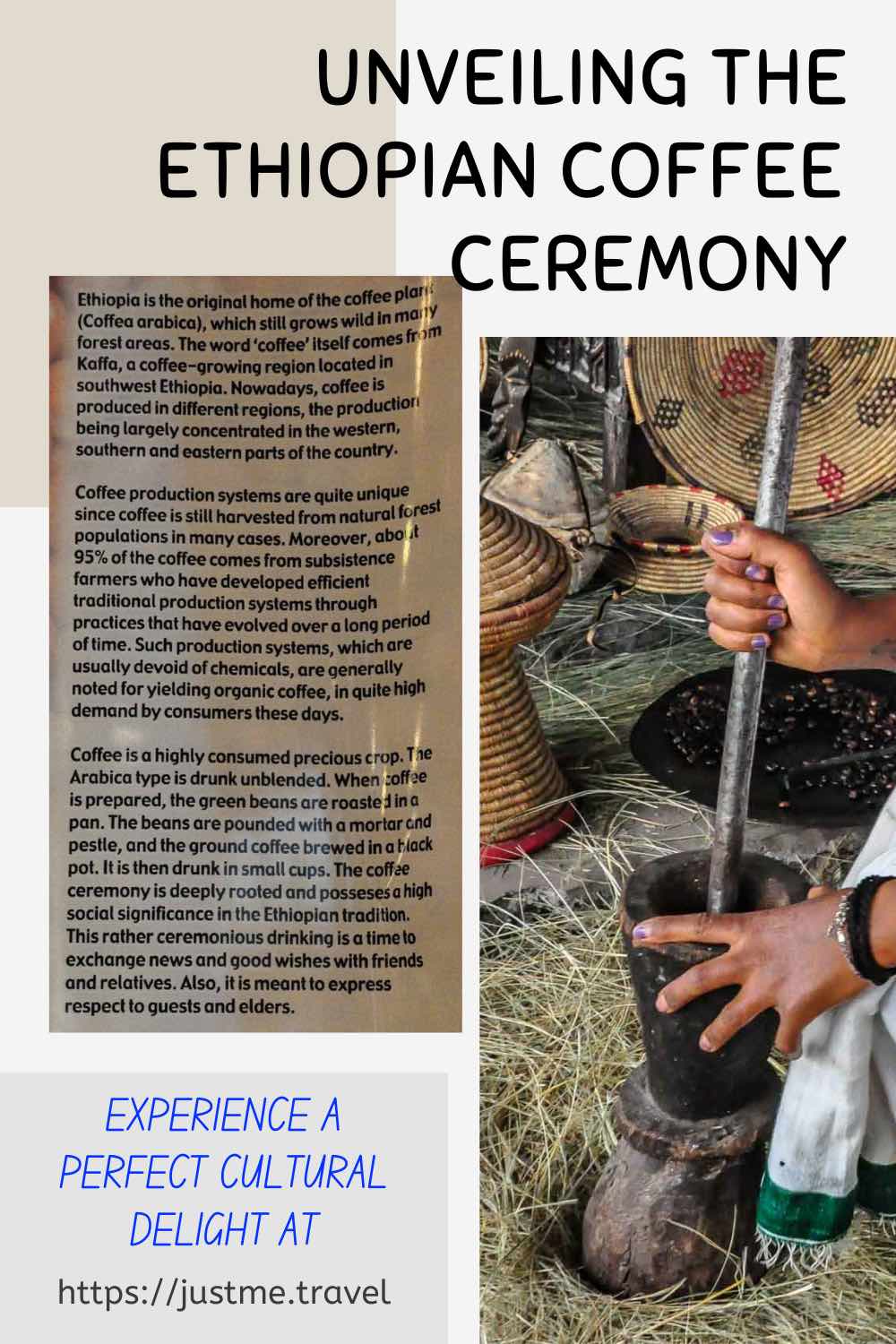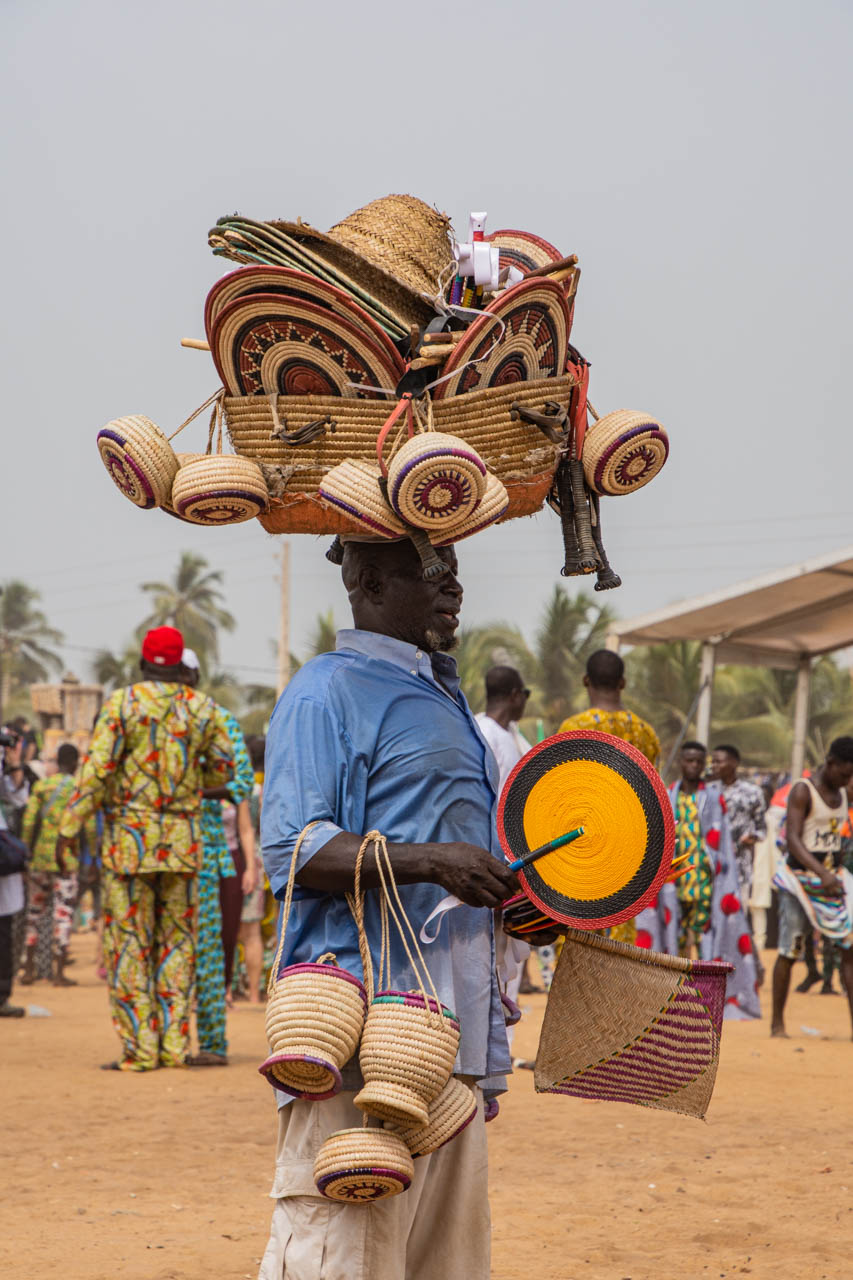Ethiopia’s Coffee Ceremony is Deeply Rooted in Tradition and Social Significance. Journey to the birthplace of coffee itself – Ethiopia – where coffee isn’t just a drink but a…
Ethiopia’s Coffee Ceremony is Deeply Rooted in Tradition and Social Significance.
Journey to the birthplace of coffee itself – Ethiopia – where coffee isn’t just a drink but a ritual steeped in tradition and social significance. This is the Ethiopian coffee ceremony, where time stands still to honour hospitality and respect, strengthen bonds, and foster conversations.
This post illustrates this timeless ritual, from the meticulous preparation of the coffee to the communal enjoyment that follows. Get ready to be immersed into the heart and soul of Ethiopian culture through its world-renowned coffee ceremony. It is a truly wonderful and unique experience!
I love coffee. I have drunk it in many countries with varying degrees of appreciation. Well, now I have found coffee heaven. It’s in Ethiopia, and there is a whole ceremony surrounding its making and drinking.
Ethiopia is the home of coffee. The coffee plant originated in Ethiopia, with the beans first brewed in the 11th century. So, Ethiopians have had a lot of practice doing stuff with coffee, to the point where a whole ceremony developed around brewing and drinking coffee. The coffee ceremony is an integral part of Ethiopian culture and hospitality. It is a significant social occasion.
Ethiopians have a delightful story around the discovery of the benefits of coffee. A goat herder noticed his goats acting excitedly and ‘dancing’ on their hind legs after eating the bright red berries from a particular tree. When he tried the berries himself, he felt energised. He grabbed some berries and rushed home to tell his wife, who told him he must share these “heaven-sent” berries with the monks in the nearby monastery. The monks did not share the goat herder’s elation, believing the berries to be sinful and the work of the Devil. They tossed the coffee berries into the fire. However, the smell of the roasting coffee beans made the monks rethink their view of this sinful drug, and they removed the coffee beans from the fire. They crushed the coffee beans to extinguish the glowing embers and covered them with hot water to preserve them. The aroma of the coffee made all the monks want to try it. After this, they vowed to drink coffee every day because they found the coffee’s uplifting effects helped keep them awake during their holy devotions. And so, Ethiopia’s coffee tradition and culture were created.
I loved the ceremony as much as the coffee itself. Unlike Italy, where coffee is drunk quickly whilst standing, preparing and drinking coffee in Ethiopia is not to be rushed as the hostess must not miss any step.
Wherever I travelled in Ethiopia, the coffee ceremony was always the same. There was something reassuring in this familiarity of freshly roasting coffee beans and the smell of fresh-cut grasses that were invariably laid on the ground. The laying of cut grasses on the floor sets the scene for the coffee ceremony.
When ordering coffee in a Western-style restaurant in Ethiopia, the coffee is brewed following the established ritual in a reserved area of the restaurant and served on a tray lined with fresh-cut grasses.
Ethiopian coffee ceremony: the traditional steps
First, the raw coffee beans are rubbed together in water in a pan to remove the skins on the beans. Then, they are roasted over a charcoal brazier, releasing the aromatic oils from the beans. The hostess – I never saw this ceremony conducted by a man – brings the pan of smoking, roasted beans around for you to waft the smoke towards you, to draw in the aroma of the roasted beans.
Once roasted, the beans are ground with a mortar and pestle. Traditionally, the mortar and pestle are made of wood.
While grinding the beans, the hostess is boiling water in a terracotta “jebena” over an open fire. A jebena is a traditional Ethiopian clay coffee pot with a bulbous, round bottom, a long, narrow neck topped with a wooden or straw stopper, and a handle.
Once the coffee beans are ground, the resultant powder is added to the boiling water in the jebena. The combined water and ground beans are boiled for a couple of minutes and then rested to allow the coffee powder to sink to the bottom of the pot.
By this stage, if you are a coffee lover like me, the smell of freshly brewed coffee will have your mouth watering in anticipation of what will come.
Finally, the coffee is poured into small, handleless porcelain cups (similar to Chinese tea cups). The pouring is done from as high as possible above the cups – about a foot above the cups. The hostess will usually serve coffee with popcorn or peanuts.
Ethiopian coffee ceremony: a social event
Coffee isn’t just a drink in Ethiopia. It is an essential component of Ethiopian culture and society. Being invited to coffee in Ethiopia is considered a sign of friendship and respect. It is a time to extend the hand of hospitality, promote social relations, and catch up on neighbourhood news.
Ethiopian coffee is drunk sweet, and black. In fact, very sweet – 2 to 3 teaspoons of sugar. Mind you, the teaspoons are minuscule. I learnt to enjoy black coffee. However, by the time I left Ethiopia, I was drinking my coffee with a lot less sugar.
When drinking coffee in Ethiopia, etiquette requires you to have three cups of coffee. The first cup is to welcome you, the second is about friendship, and the third is to say goodbye. Denying coffee at any of the three servings is considered rude. Remember, these are tiny cups, so having three is less in quantity than a mug of coffee.
Ethiopian coffee is the best I have ever tasted. The two women I was travelling through Ethiopia with told me I said, “Oh, that’s good coffee”, every time I had a cup of coffee. This must have driven them mad because we had lots (and I mean lots) of cups of coffee. Finally, one of my travel companions told our diver-guide that Ethiopia needs to change its tourism slogan from “13 Months of Sunshine” to “Oh, That’s Good Coffee”. He just laughed.
So, if you ever find yourself in Ethiopia, immerse yourself in the magical and captivating experience of the coffee ceremony. You won’t be disappointed!
To learn about Ethiopia’s coffee ceremony’s cultural and social history, visit the Institute of Ethiopian Studies Ethnological Museum in Addis Ababa. This well-organised, delightful museum on Addis Ababa University’s main campus is dedicated to preserving, studying, and presenting Ethiopia’s rich cultural heritage.
The Ethnological Museum is open daily, excluding public holidays, with entrance fees charged at different rates for adults, students, and those wanting to take photographs. Engage one of the available guides who provide valuable information and insights about the museum’s collections.
From the first crackle of roasting beans to the three rounds of shared cups, the Ethiopian coffee ceremony is more than a mere caffeine fix. It is a ritual filled with tradition, hospitality, shared moments, and a deep appreciation for the humble coffee bean.
The ceremony unfolds in deliberate steps: roasting beans over coals, grinding them by hand, and brewing them in a traditional pot. Each step contributes to the welcoming atmosphere and deep-rooted traditions that define the Ethiopian coffee ceremony.
Whether you have experienced it firsthand or are curious about it from afar, the Ethiopian coffee ceremony stands as a testament to the beauty of cultural rituals and the power of a shared cup of coffee to bring people together, wherever they may be.
Editor’s Note: I originally published this blog post in March 2019 and have updated it for accuracy and comprehensiveness.
Disclaimer: This post contains no affiliate links. All views and opinions are my own and non-sponsored. All photos are my own and remain the copyright of Just Me Travel.
© Just Me Travel 2018-2024.
Where have you had the best cup of coffee? What made it so great?
I love hearing from you. Join the conversation and leave a comment below.
Like this post? Save it for Later!
Author’s Note: Please check the latest travel restrictions before planning any trip and follow government advice.
You might also like
 LOST IN TRANSLATION IN ETHIOPIA – Is that the heater?
LOST IN TRANSLATION IN ETHIOPIA – Is that the heater?
International travel will inevitably lead to translation challenges. Read about my communication issue in Ethiopia’s Simien Mountains, which I can laugh about now but, at the time, impacted my physical comfort.



























